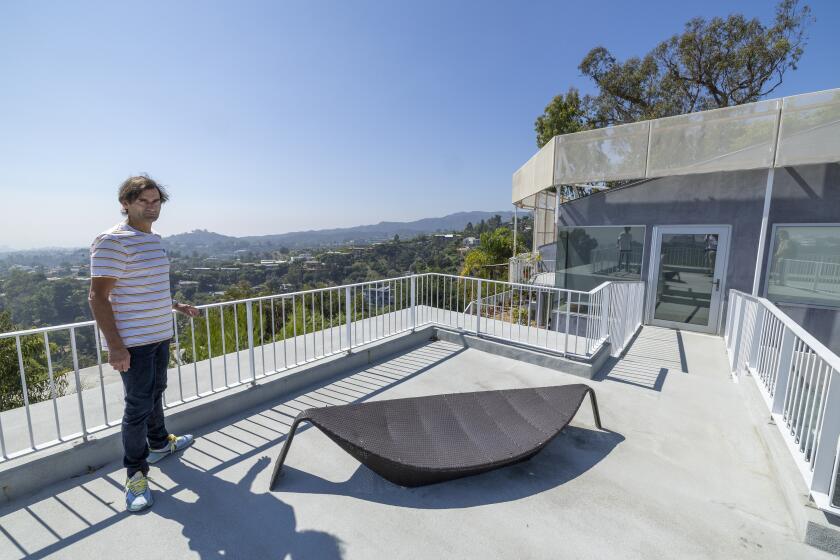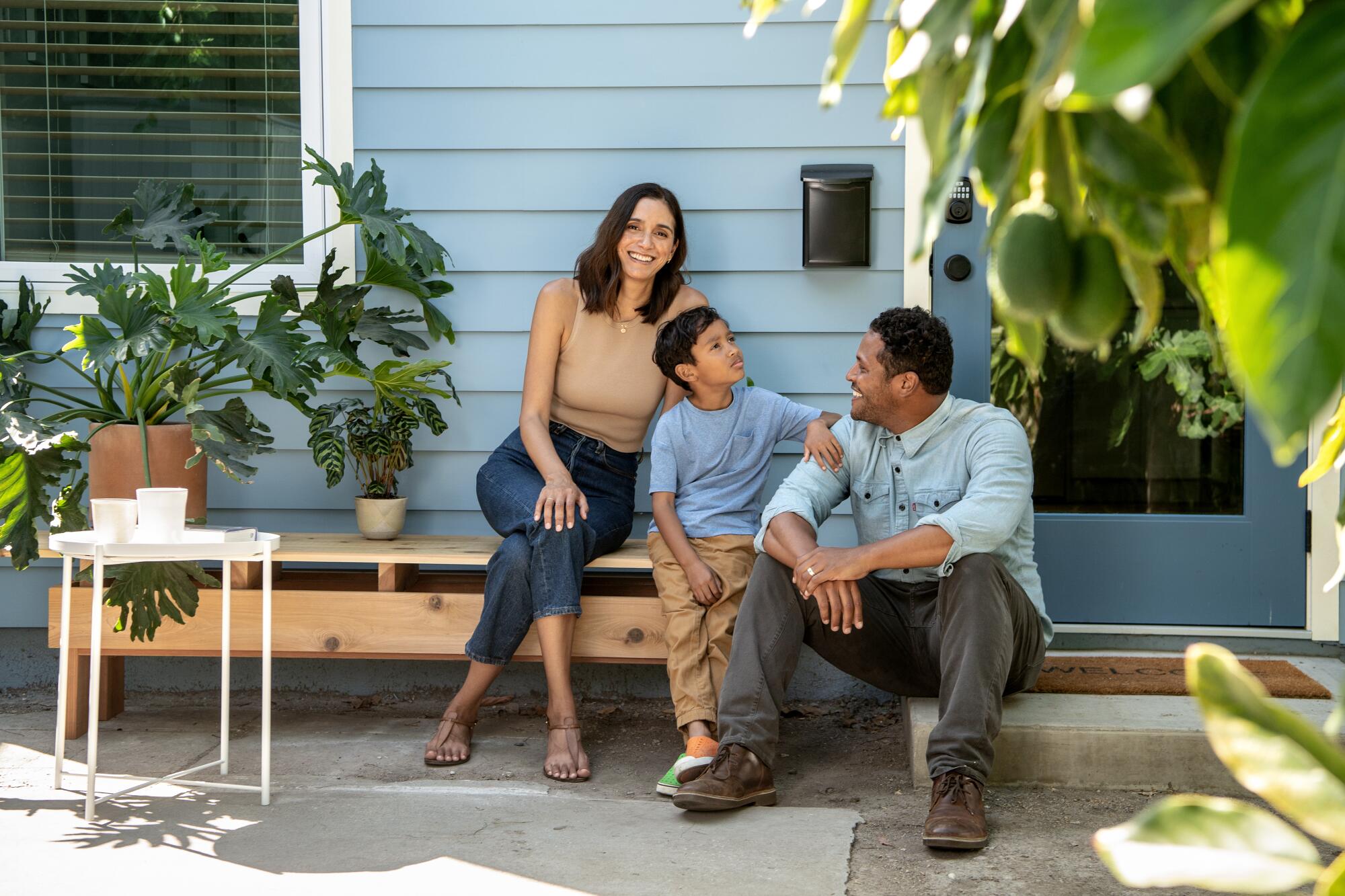
- Share via
The term accessory dwelling unit might evoke images of granny shacks inhabited by aging parents, sleek prefab backyard units that keep family close or converted garage rentals that offer supplemental income.
For commercial actors Alex Mason and Nicole Lemoine, it’s the latter image that tells their ADU story. In L.A.’s expensive housing market, rental income from their recently constructed studio could provide the freelancer couple with a needed financial boost should they ever move forward with plans to buy a bigger home.
“Qualifying for any kind of financial mortgage is a hassle for us,” said Mason, who met Nicole in 2004 at a Jeep owners’ convention in Santa Barbara. (They married in 2011.) “So if we ever want a house that’s a little bigger, having an ADU that generates income is a long-term benefit. We can qualify for a mortgage once we have two years of income on the ADU.”
The couple, who are in their early 40s, love their 1923 Mid-City bungalow, which is located not far from the 10 Freeway. But after a decade of living there, Mason and Lemoine were ready to update their 900-square-foot home, which they share with their 7-year-old son, Xavier.
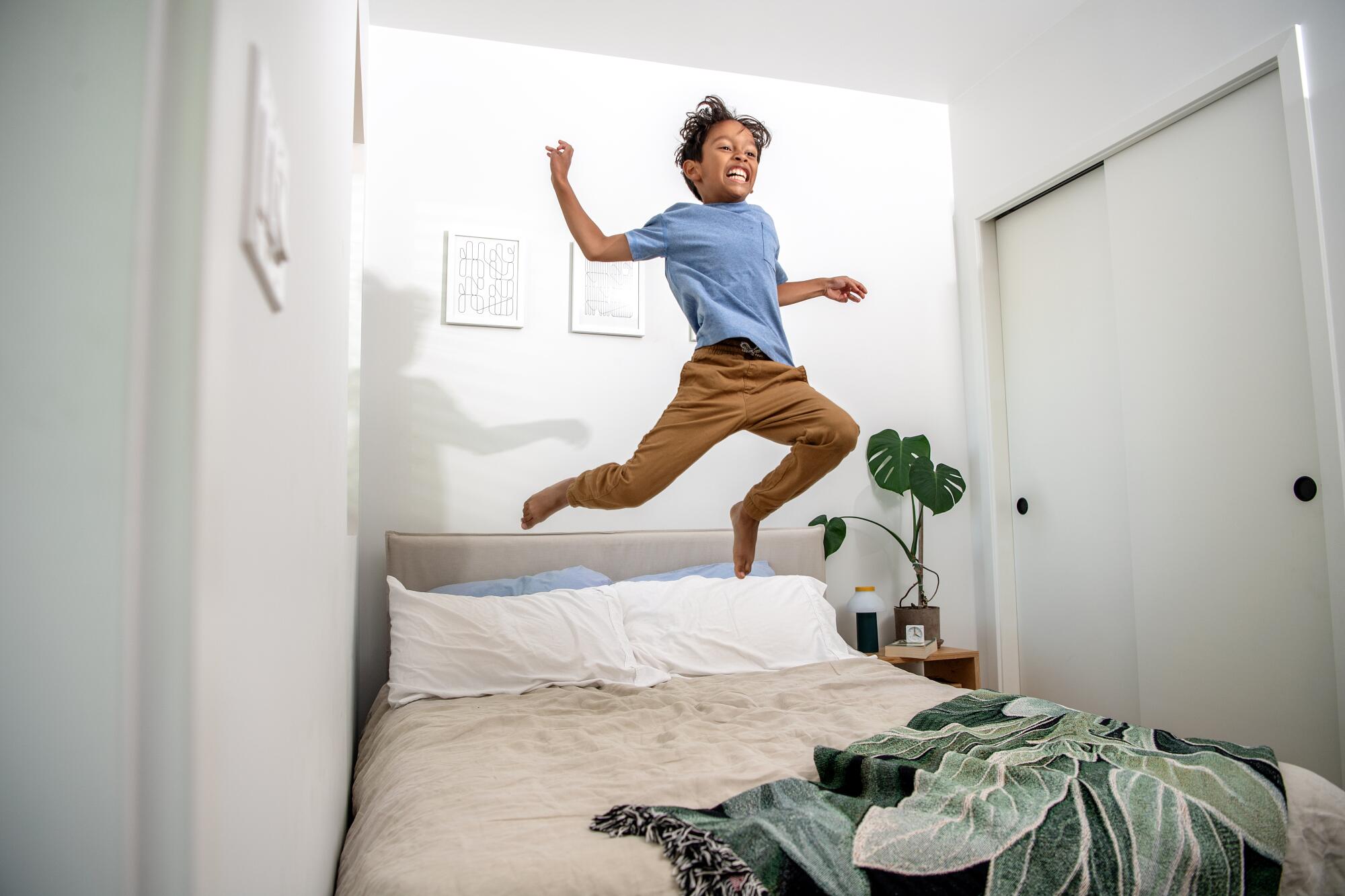
They started with a bathroom remodel, which led to a kitchen remodel and the ADU. “We thought if we’re going to do the bathroom, we should do the kitchen too,” Mason said.
Knowing they would need a place to stay during construction, the couple’s eyes turned to the one-car garage in their backyard.
Mason, who studied architecture at UCLA, investigated the prospect of converting the garage into an ADU to see what kind of return they could get on the investment.

He describes it as a light-bulb moment. “I thought this is what we should be doing,” he added. “I researched what it would cost versus what value it would add to our house.”
Despite his experience designing bars and restaurants in L.A., Mason knew he did not want to act as the general contractor on his own housing project.
Elizabeth Hirschhorn, who rented a Brentwood guesthouse on Airbnb and stayed 570 days without paying rent, moved out on Friday. She said she had a right to stay.
“I have done it and I’m not good at negotiating,” Mason said. “It would have made the experience dreadful for me, my wife and our son. Our quality of life would have suffered.”
After interviewing three companies in 2019, the couple hired Los Angeles-based Otto ADU because they preferred the company’s finishes.
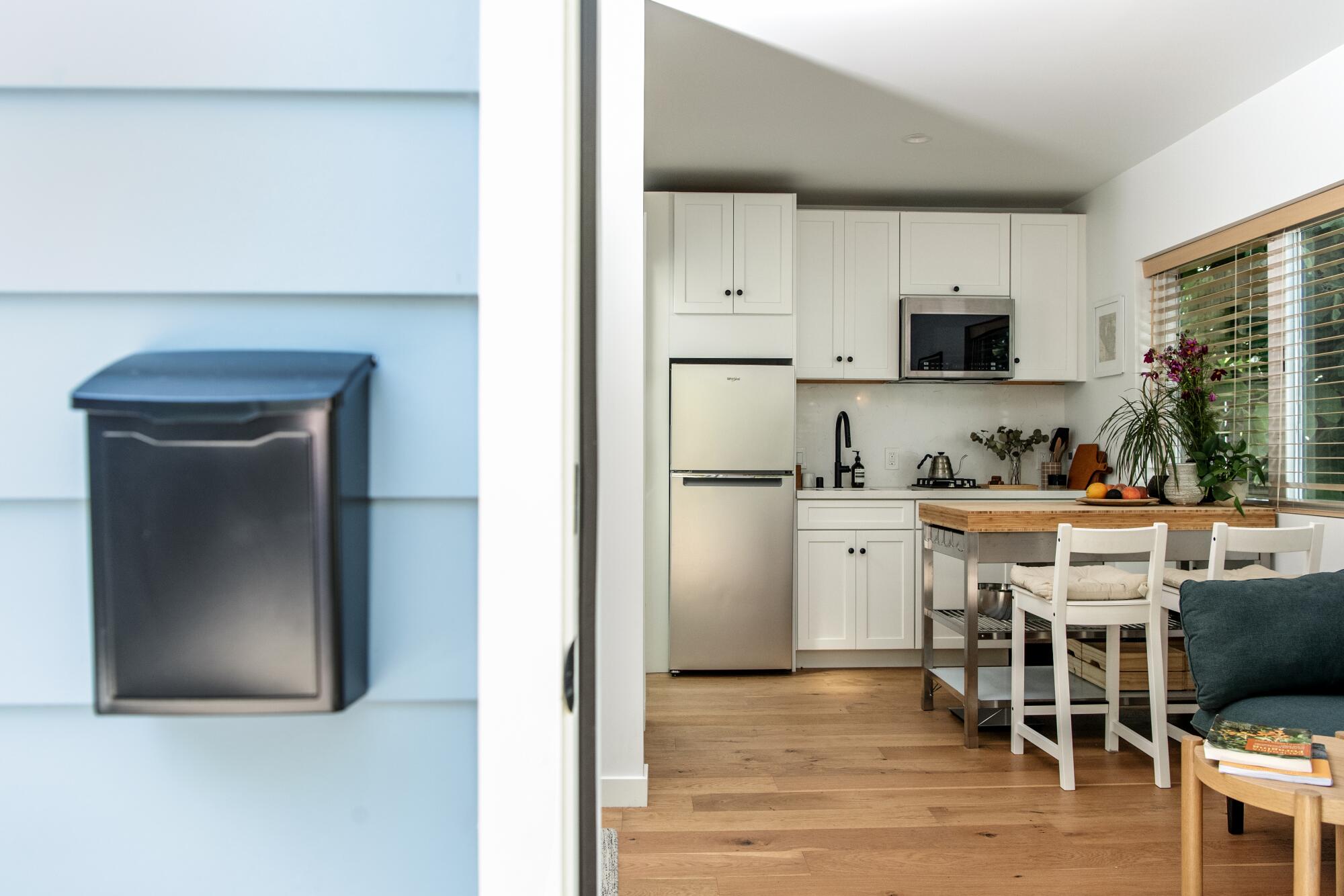
The couple had hoped to install a one-bedroom unit with a full kitchen but ultimately chose a studio with a kitchenette because of their local setback requirements.
That meant making a tough choice in the kitchen: forgoing an oven. “I love to cook and bake and thought a long-term tenant would value an oven,” Mason said, “but we thought a dishwasher would be more valuable.”
Working together, the couple and the designers at Otto drew up plans that reflected the style and siding of the 1920s bungalow. While they didn’t match the blue exterior exactly, they installed a modern interpretation of cement board siding in the same color scheme. “It looks like what the garage looked like and fits the property,” Mason said.
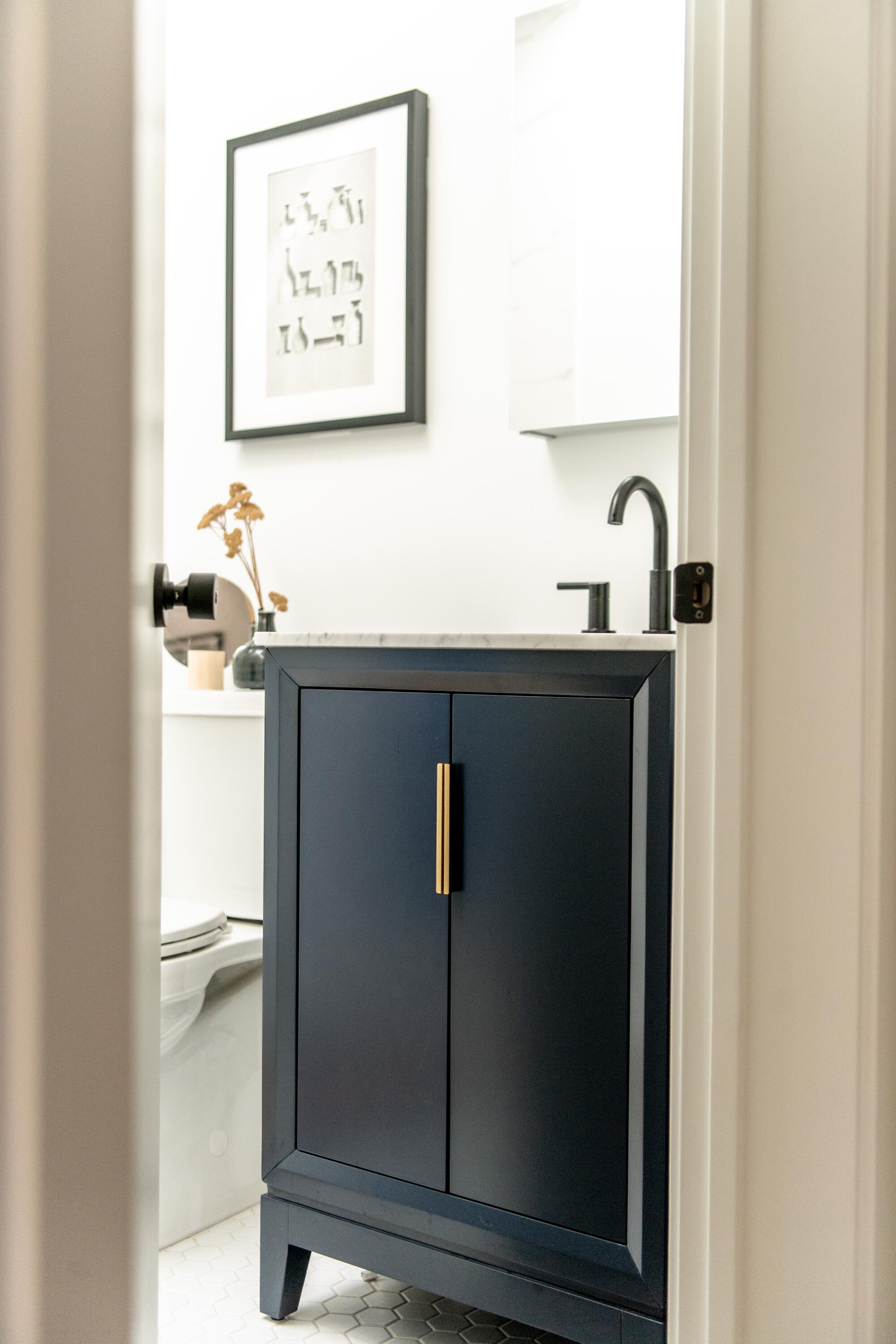
To get an idea of the timeline, the couple signed a building contract on Dec. 21, 2021, which locked them into the estimated cost of $180,000 when Otto offered a price guarantee before the COVID-19 pandemic. Mason and Nicole helped finance the ADU with a cash-out refinance that took six months and through a $40,000 CalHFA ADU grant, a state program administered through the nonprofit HPP Cares and designed to help low- and moderate-income California homeowners build ADUs.
The price of construction materials soared during the pandemic, and representatives for Otto said a similar ADU would cost around $220,000 today depending on the finishes.
However, Mason and Nicole’s 300-square-foot one-car garage was in terrible shape, so Otto tore it down and rebuilt it within the same footprint. (By keeping one foot of the existing wall, the couple could permit the home as a garage conversion, saving money on permit fees.)

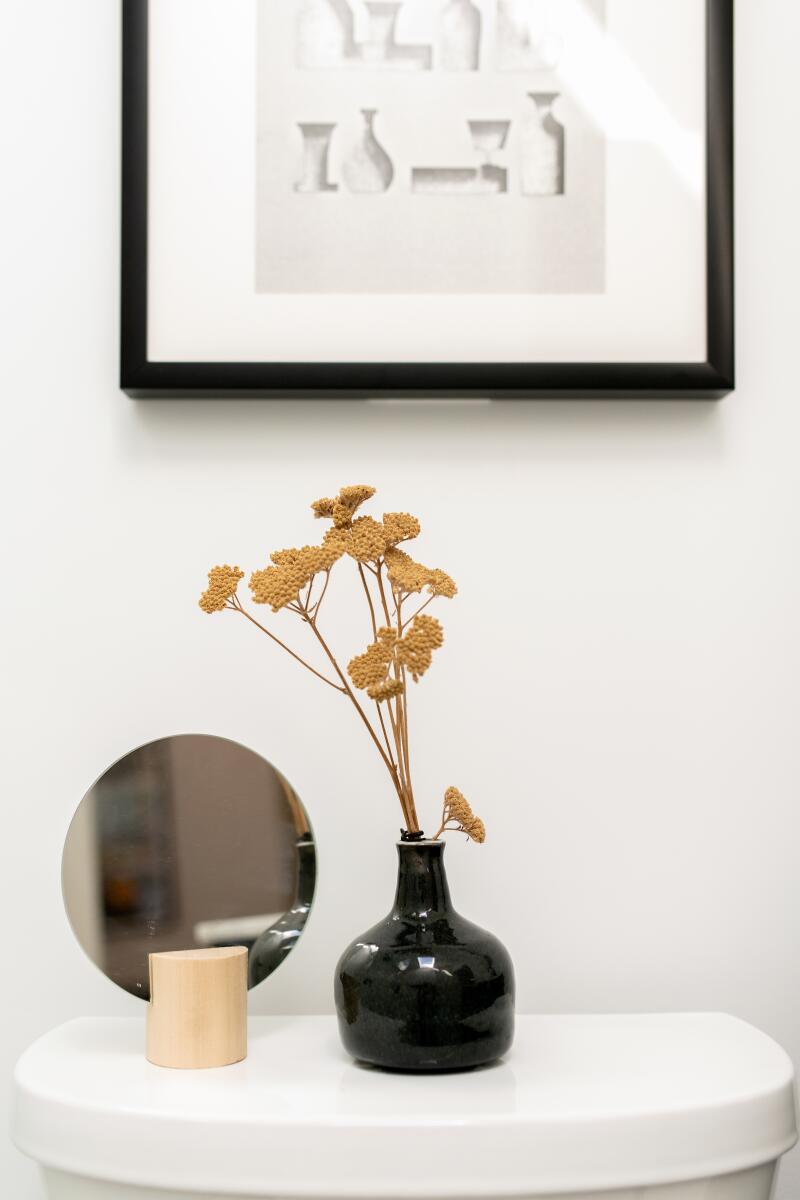
Working with Otto ADU, the couple tore down the garage and replaced it with an ADU in the same footprint. (Mariah Tauger / Los Angeles Times)
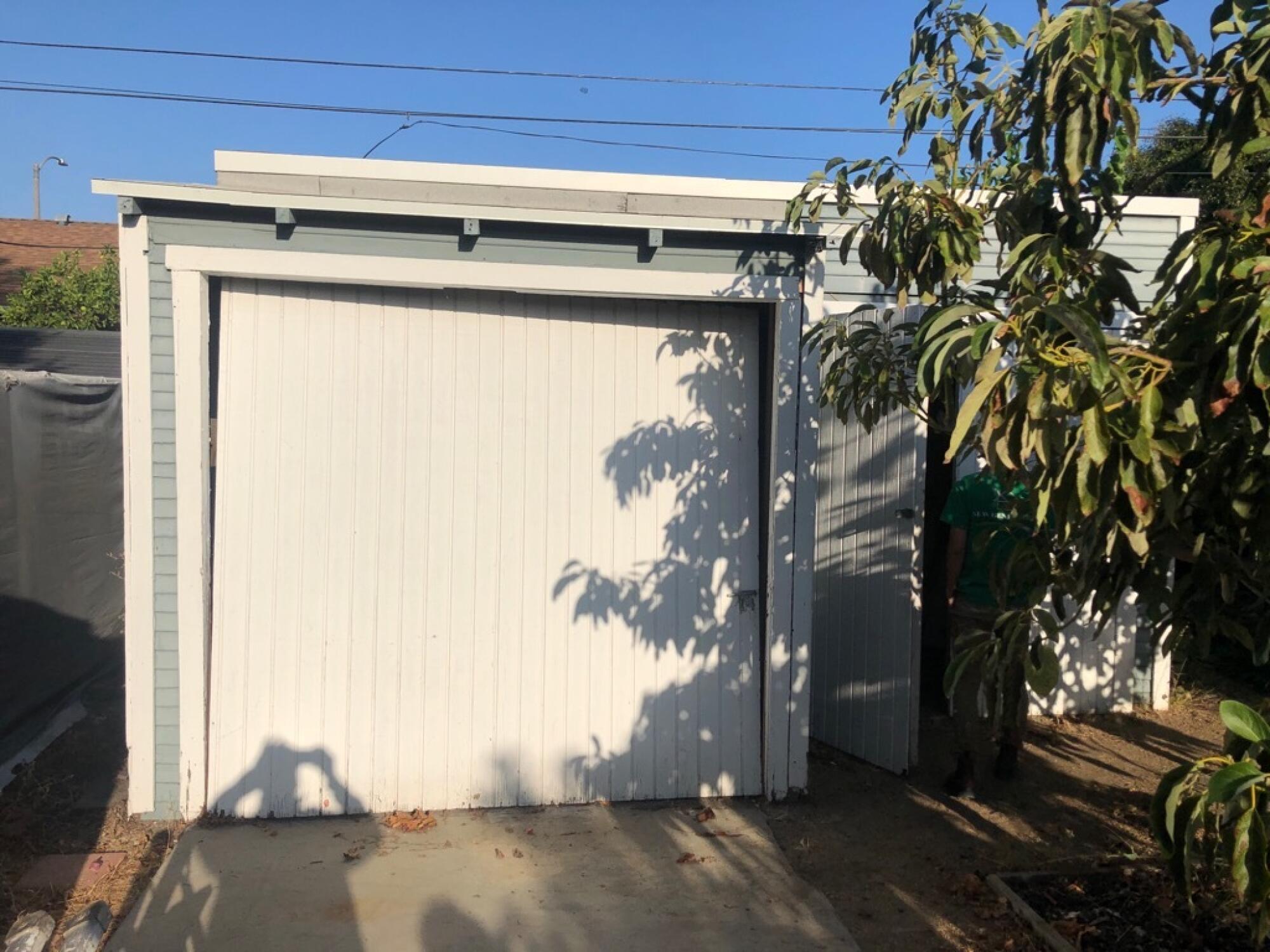
In some instances, it is better to demolish a decades-old garage with foundation issues rather than convert it into an ADU, said Otto founder Sean Phillips.
“Converting a garage is a great way to build an affordable ADU with the added advantage of preserving yard space by adhering to existing setbacks, especially if the garage is already positioned within four feet of the property line,” Phillips said. “However, the feasibility of converting a garage largely depends on its structural integrity. In some cases, it may be more practical and cost-efficient to demolish and rebuild rather than renovate a deteriorating structure.”
Homeowners and architects share some of the lessons they learned in building an accessory dwelling unit, or ADU, on single-family lots in Los Angeles.
After months of collaborating on the design with Otto, Mason and Nicole discovered that the road to construction would be rocky. Their contractor quit when they were forced to tear down the garage, and then they had to find a new one. They took a three-month break to figure out how to add solar, required by Title 24, California’s energy efficiency standards. Because the most miniature system would have been too big for the ADU, they installed solar panels on the main house instead.
“Now we have solar for our house, our ADU and we can charge two electric cars and use AC,” Mason said. “We make a lot of energy in our house.”

With two houses on a small 3,500-square-foot lot, the 300-square-foot ADU was designed to ensure privacy when the couple eventually rents it long-term.
“It’s always a balance between letting in light and creating privacy for the neighbors,” Phillips said of the multiple windows that create an airy feel inside the ADU but don’t look into the main house a few feet away.
The studio has enough room for a queen-sized bed, a closet and a full-sized washer and dryer in a folding closet accessible from the kitchen area. With no windows in the bathroom, the designers at Otto installed a skylight that bathes the room in light.
“The bathroom seems to be everyone’s favorite space,” Mason said. “The skylight opens it up and brings the outdoors inside.”
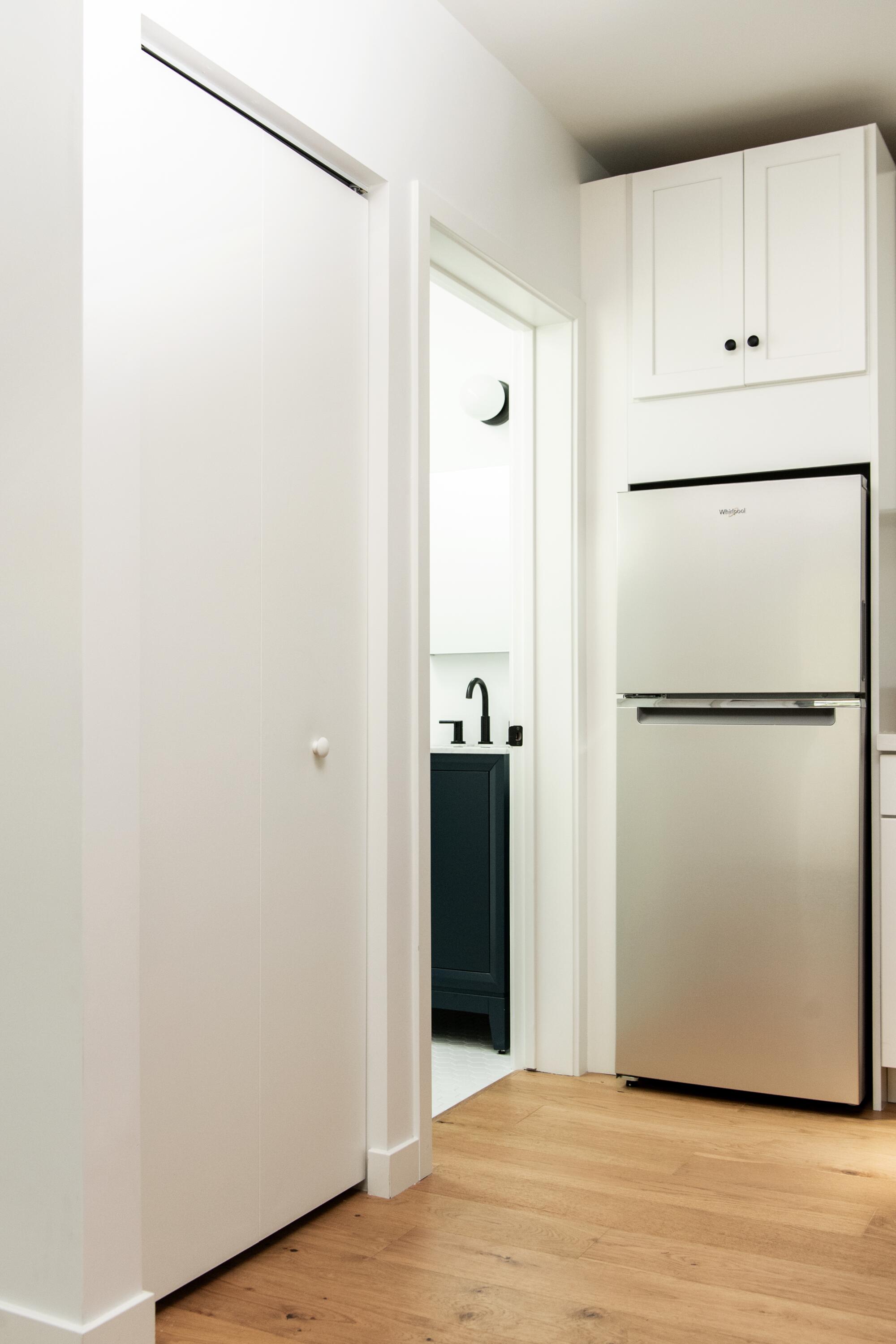
After a lengthy process, construction on the ADU started at the end of September 2022 and was completed six months later. Mason said it would have been completed earlier if not for the heavy rains in Los Angeles this past winter.
For now, as they decide what’s next, the couple is using the ADU to cast acting jobs and for friends and family who come to visit.
“I needed the space to be nice enough to rent and accommodate friends and family,” Mason said. “I had a cousin live here for a month. We had three people stay in it while visiting from North Carolina. The value of putting in something nice is definitely worth it.”
The biggest challenge, the couple said, is figuring out how to store things like gardening equipment, tools and other things you don’t want to keep in the house without a garage.
Looking for an Eames lounge chair or a Danish modern credenza? Here’s a list of the 18 best places to shop for Midcentury Modern furniture in L.A.
“There is one shed’s worth of stuff in the house,” Mason said with a sigh as he pointed to his two Home Depot storage sheds in the driveway.
Despite its tiny floor plan, the studio’s rooms feel unified with a simple palette, warm wide oak plank flooring and a simple white kitchen.
The couple isn’t sure whom they will rent the ADU to long-term. Nicole, who is active in a mothers group, said she would like to provide transitional housing for single moms. Traveling nurses and colleagues in the entertainment industry are other options for future tenants.
But one thing appears certain. Collecting two years of income from the ADU will allow the couple to consider their future housing possibilities seriously.


With L.A.’s strong rental market and a new federal law that allows lenders to count income from ADUs when underwriting mortgages, Mason said he hopes they can take advantage of the new policy when they move from their starter home.
“Or maybe we won’t,” Nicole said with a laugh as she waved to their neighbors from the sidewalk while recommending the produce at the nearby Wellington Square Farmers Market. “We bought our house in Mid-City Heights in the fall of 2013 after living in Mid-City for five years. We love our neighborhood.”
Whether they stay put or move to a bigger home, one thing is certain: The rental income from the ADU will give them the security they need as freelancers to be approved for a new mortgage.
“We have done many things to try and buy our next house,” Mason said. “We turned ourselves into an S Corp and have a company that writes us paychecks. Our life hasn’t changed, but on paper, it shows up in a way that an underwriter can get behind.”
More Los Angeles ADUs
Millennials and Gen Z can’t afford homes. Is this prefab ADU a solution?
How a Spanish bungalow in L.A. went from sad to sexy (Hint: There’s an ADU rental)
She wanted more than a guesthouse for her sister. This tiny ADU in L.A. delivers
They built an ADU that’s ready for rules that don’t exist yet
Tiny hideaway inspired by Richard Neutra has terrarium vibes and a rooftop deck
This ADU rental with windows galore is a houseplant lover’s dream
How an aging Tudor’s ADU reunited a family and brought them closer together
They turned a one-car garage into a stunning ADU to house their parents.
SoCal small-space living: 37 homes that inspire
More to Read
Sign up for The Wild
We’ll help you find the best places to hike, bike and run, as well as the perfect silent spots for meditation and yoga.
You may occasionally receive promotional content from the Los Angeles Times.

